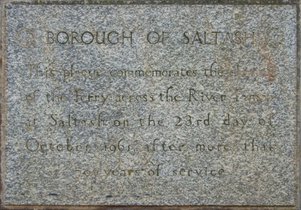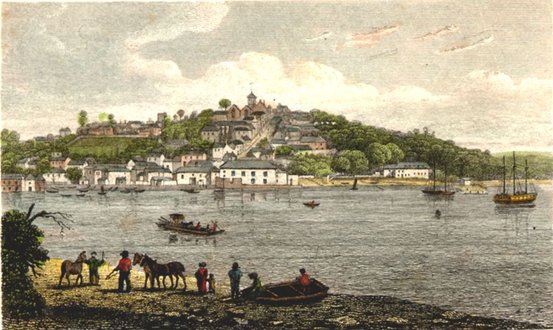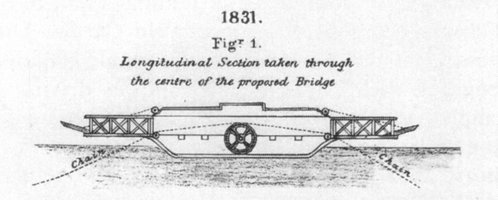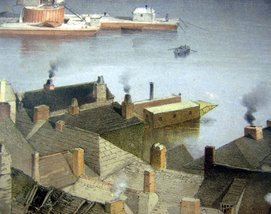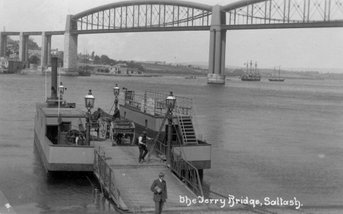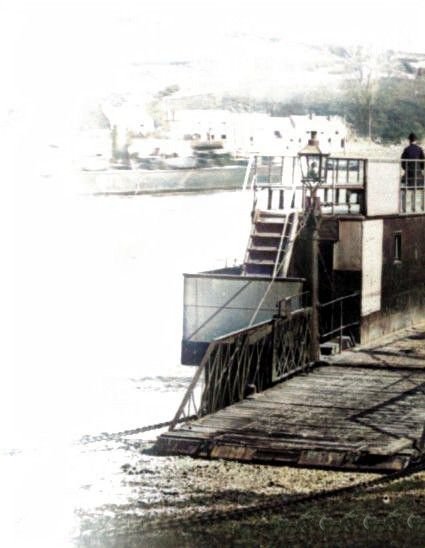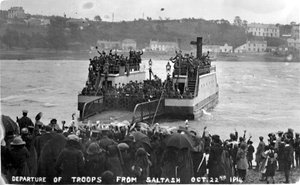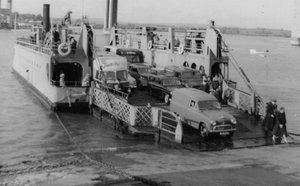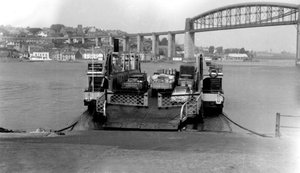Saltash History and Heritage
Saltash Ferry
Most people who walk along the waterside below the road and rail bridges will not notice a plaque on the roadside wall which proclaims:
BOROUGH OF SALTASH:
This plaque commemorates the closing
of the ferry across the River Tamar
at Saltash on the 23rd day of
October 1961, after more than
700 years of service.
For the greater part of that time the Saltash ferry was the most important in the West of England and the Borough of Saltash derived a good proportion of its income from it. Certainly the £35,000 compen¬sation paid to the Borough by the Tamar Bridge Joint Authorities was less than generous
Saltash Passage is documented as early as the 13th century; and Douglas C. Vosper in his ‘The Ancient Ferry at Saltash’ declares there is evidence that it was an important crossing at the time of the Norman Conquest. The rights of ferry at Saltash belonged to the Valletort family from the years following the Norman Conquest until 1270, when Roger de Valletort sold Trematon Castle and estate to Richard, Earl of Cornwall. Thereafter, the Earl's bailiff received the rents which fell due to the manor for Saltash Passage, in the 1290’s they amounted to £6.18s. a year.
View across the river towards Saltash with St Nicholas and St Faith church on top of the hill in pre steam ferry days
The ferry (originally known as a steam bridge) was ready for service by the end of 1832, and according to the newspaper "Western Luminary", did its trial run in 4½ minutes. The improved trade must have been short-lived, because the same ferry system was introduced at Torpoint in 1834, with a second for reserve in 1836.
To accommodate the new Saltash chain-ferry which had an overall length of 80 feet with the engine midships and vehicle decks on either side, it was necessary to move the landing place on the Devon side down river, so that the floating bridge could approach the Saltash beach at a better angle. The relative positions of Ashtor Rock and the Passage House Inn made a fixed approach on the old line impossible. Consequently an embankment was made south-wards along the beach to a point near Little Ash Quarry – later Tea Gardens - where there was a suitable hard beach. Wolseley Road did not exist in 1831. It and New Road, Saltash, were authorised by a Turnpike Act of 1833, and land for New Road was purchased in 1834.
Steam Ferry | Date in service | Date out of service | Builder/Designer | Cost & notes | Fate of ferry |
Ferry 1 | 1832 | 1836 (less than 3½ years) | James M. Rendel | Court case to regain ferry rights | Broke down, beyond repair |
1836 | 1851 | Oar propelled horse boat reintroduced | |||
Ferry 2 | 1851 | 1865 | Ratcliffe of Mountbatten (wood) | New 25 year lease £195/year | Sank on slipway 1865 |
Ferry 3 | 1866 | 1891 | Plymouth Foundary and Iron Works. Hull Steel, superstructure wood | Engines from ferry 2 salvaged and reused on this ferry | Sold for scrap |
Ferry 4 | 1891 | 1927 | Willoughby's of Plymouth (steel) | Cost £2,200. Major repairs 1896. Horse boat in service | Sold for £75 to Vick Bros. of Plymouth |
Ferry 5 | 1911 | 1933 | Willoughby's of Plymouth (Steel) | Cost £3.500 | 1913 Horse boat sold for £2.10s Ferry sank while under tow to a scrap-yard |
Ferry 6 | 1927 | 1961 | Philips of Kingswear Dartmouth | Cost £8.950 | Cut in half and widened to take four lanes of cars. Sank on way to breaker’s yard in Ireland. |
Ferry 7 | 1933 | 1961 | Thorncroft of Southampton | Cost £10,750 | Sold to King Harry Ferry and later converted from steam to diesel electric. In 1974 the ferry sank while being towed to Spain. |
Ferry 3 looked very similar to the previous ferry. It was powered by the salvaged engines from Ferry 2 and was the last wooden ferry; it cost £1,300.
Ferry 4’s arrival was greeted with great euphoria by the people of Saltash, but this was short lived when the ferry broke down after only a few weeks. Luckily the old ferry was still available; although it had been sold for scrap it was brought back into service.
In 1911 a new larger ferry (ferry 5) designed by Mr. Tobias Bickle and again built by Willoughby's of Plymouth at a cost of £3,500 entered service. She carried two rows of four vehicles each, with their horses, and had a top deck on each side for foot passengers. To accommodate the new vessel, the chain-pipes and moorings were widened to 33½ feet, with wells containing three ton weights to act as springs.
On 15th September 1927 a new and larger ferry (ferry 5) than the 1911 boat, was purchased from Philip and Sons of Kingswear, Dartmouth.
Built in 1933 Ferry 7 suffered a major problem with her boiler and one of the driving chain wheels. Spare parts were hard to come by so the ferry spent over a year on the stocks at Saltash Passage,
Ferry 2 from a drawing in Saltash Guildhall

